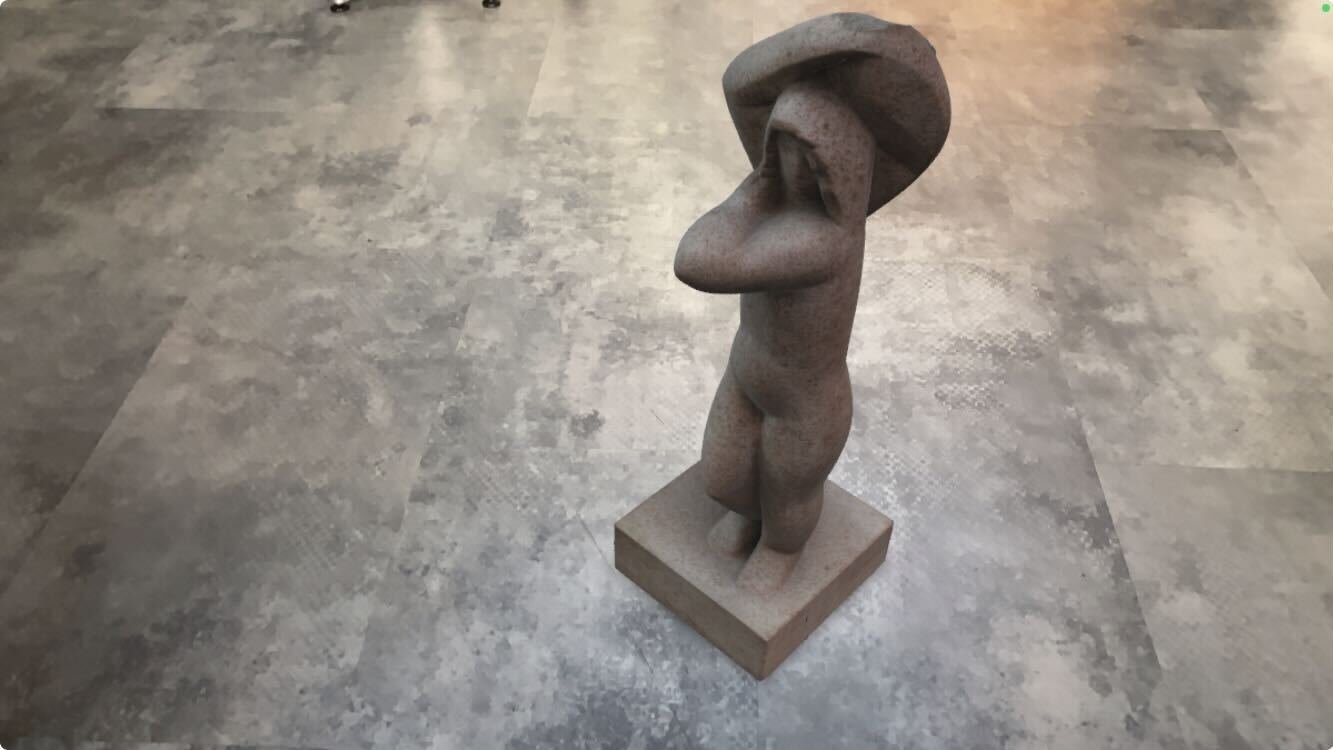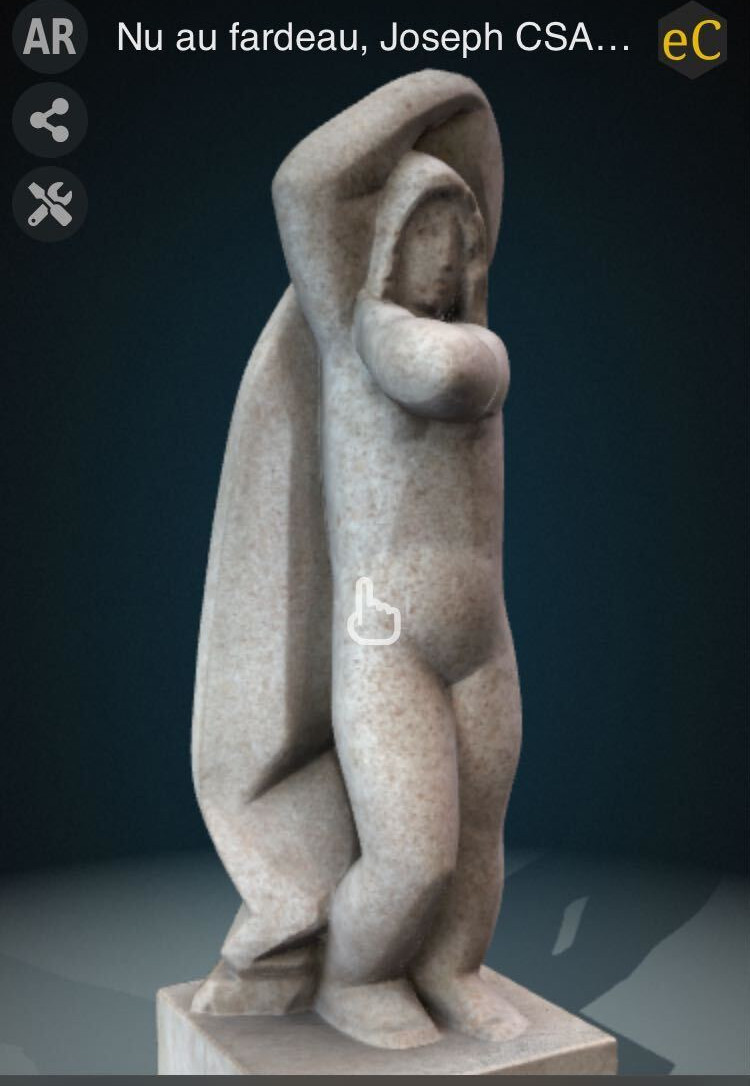Augmented Reality

The Augmented Reality (AR) feature allows for the overlay of a digital object into a real-world environment.
The augmented reality module works by transmitting a compatible 3D model to the mobile browser.
The operating systems iOS and Android require specific implementations, which are described below.
Summay
iPhone (iOs)
This module uses Apple’s ARKit for iOS and 3D models in the USDZ format.
SVX Update
Requirements :
- be familiar with the data structure of eCorpus scenes, which is inherited from the SVX document format of the Voyager scene.
- know how to use the eCorpus API to modify the scene files.
Add the AR model to the SVX
Get the SVX of the scene from the interface or from the API.
Edit the derivative section to add a new element with the following information:
- usage : iOSApp3D
- quality : AR
The result should be close to this:
{"SVX...": {"SVX..."},
"derivatives":[
{
"existing derivatives":"...",
},
{"usage":"iOSApp3D",
"quality":"AR",
"assets":[
{"uri":"${FILENAME}.usdz",
"type":"Model",
"Type":"model/vnd.usdz+zip"}
]
}
],
"SVX...": {"SVX..."},
}
Loading the SVX
Replace the existing SVX using the API.
curl -L -XPUT -u "${USERNAME}:${PASSWORD}" -H "Content-Type: application/json" --data-binary @scene.svx.json https://${HOSTNAME}/scenes/${NAME}/scene.svx.json
Generate the USDZ
Using Blender, export in USD* and save the scene under the name ${FILENAME}.usdz
Quality recommendations :
- Polycount : 200k
- Texture 4k
Using a Mac, use Reality Converter to export a 3D fil into a usdz file.
Import the USDZ
Import the model with the API.
curl -L -XPUT -u "${USERNAME}:${PASSWORD}" --data-binary @${FILENAME}.usdz https://${HOSTNAME}/scenes/${NAME}/${FILENAME}.usdz
The scene will now offer an AR option for iOS devices with access to ARKit.

Smartphone (Android)
This module uses Android features and 3D models in the glTF format (.GLB).
SVX Update
Requirements :
- be familiar with the data structure of eCorpus scenes, which is inherited from the SVX document format of the Voyager scene.
- know how to use the eCorpus API to modify the scene files.
Add the AR model to the SVX
Get the SVX of the scene from the interface or from the API.
Edit the derivative section to add a new element with the following information:
- usage : App3D
- quality : AR
The result should be close to this:
{"SVX...": {"SVX..."},
"derivatives":[
{
"existing derivatives":"...",
},
{"usage":"App3D",
"quality":"AR",
"assets":[
{"uri":"${FILENAME}.glb",
"type":"Model",
"Type":"model/vnd.glb+zip"}
]
}
],
"SVX...": {"SVX..."},
}
It is also possible to drag and drop a .GLB model into an existing eCorpus scene and select the “AR” derivative.
This operation will add a derivative in the SVX in this form:
{"SVX...": {"SVX..."},
"derivatives":[
{
"existing derivatives":"...",
},
{"usage":"Web3D",
"quality":"AR",
"assets":[
{"uri":"${FILENAME}.glb",
"type":"Model",
"Type":"model/vnd.glb+zip"}
]
}
],
"SVX...": {"SVX..."},
}
Loading of the SVX
Replace the existing SVX using the API.
curl -L -XPUT -u "${USERNAME}:${PASSWORD}" -H "Content-Type: application/json" --data-binary @scene.svx.json https://${HOSTNAME}/scenes/${NAME}/scene.svx.json
Generate the GLB
Using Blender, export in glTF and save the scene under the name ${FILENAME}.glb
Quality recommendation :
- Polycount : 200k
- Texture 4k
Import the GLB
Import the GLB using the API.
curl -L -XPUT -u "${USERNAME}:${PASSWORD}" --data-binary @${FILENAME}.usdz https://${HOSTNAME}/scenes/${NAME}/${FILENAME}.usdz
The scene will now offer an AR option for Android mobiles with a compatible browser.
